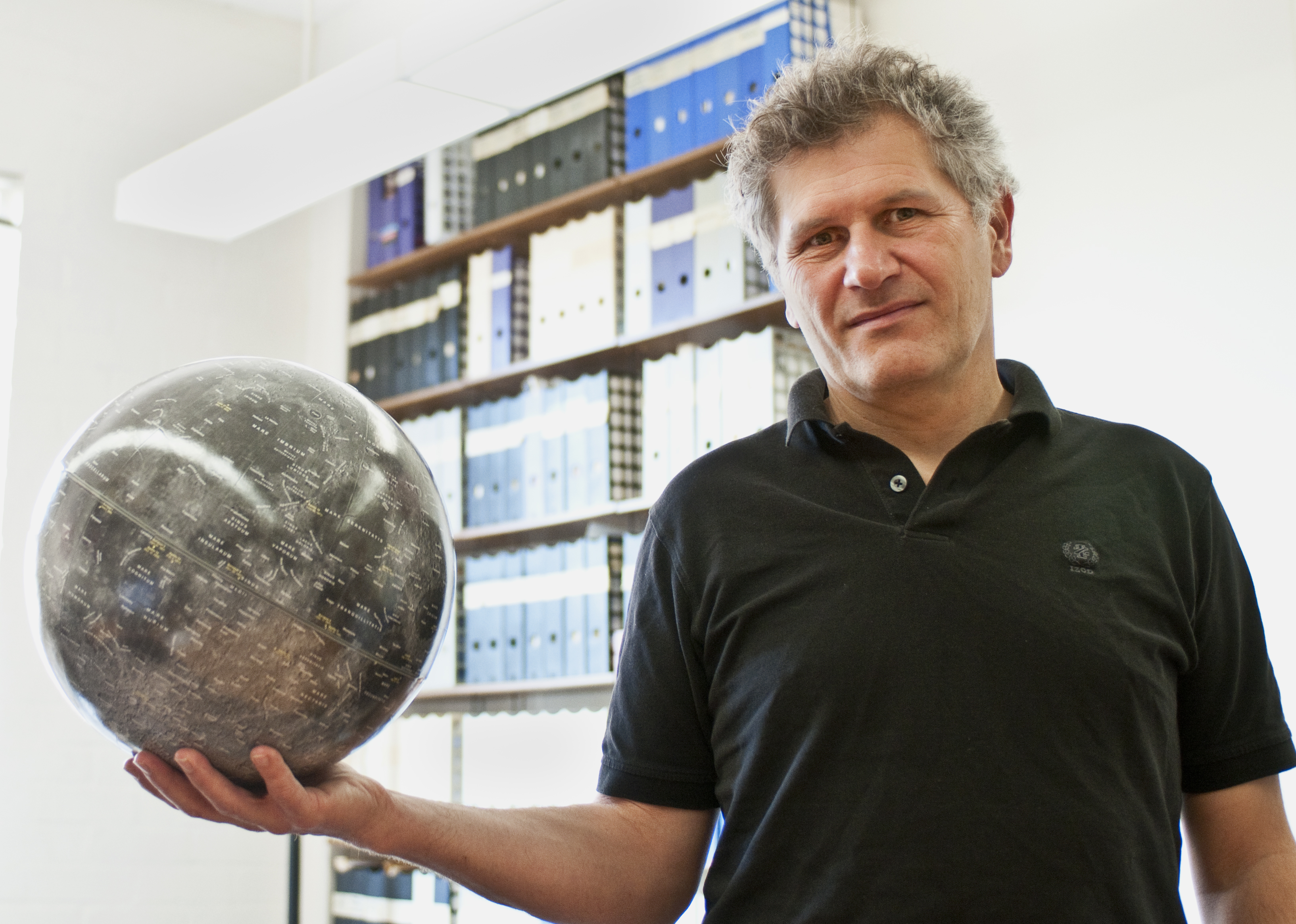UCLA professor and his team discover ice below the surface of Mercury's poles

UCLA professor of planetary science David Paige holds a model of the moon. Paige and his team have discovered ice on the moon and Mercury. Paige is now working on publishing the conclusions.
By Golmah Zarinkhou
May 8, 2012 1:07 a.m.
Water can be very informative.
Earth has more of it than scientists can explain. And if it exists on nearby planets, it could mean that there are other life forms in solar systems elsewhere in the universe.
Now, it appears that water is present on Mercury, the planet closest to the sun. UCLA professor of planetary science David Paige and a team of scientists recently concluded that ice exists below the surface of Mercury’s poles.
Paige used data from MESSENGER, the first spacecraft to orbit Mercury, and a computer model he had originally developed to study the moon.
The scientists presented the data at a large academic conference in March, and Paige is now working on publishing the conclusions.
An instrument called the laser altimeter on the MESSENGER spacecraft bounces lasers off Mercury’s exterior and measures the travel time for the reflection. Paige used this information to create a three-dimensional map of the planet’s surface and temperature, he said.
Gesturing to the dark grayish computer keyboard in his office, he said parts of the surface of Mercury were just as dark ““ but oddly enough, some cold regions have turned out to be even darker than they expected. Paige said he believes these regions might contain a tar-like, organic material that layers and protects ice.
Further evidence supports the hypothesis that ice could exist on Mercury, Paige noted. Although Mercury’s temperature can grow hot enough to melt lead, craters cast cooling shadows and the planet’s poles are protected from the heat of the sun because of Mercury’s tilt, providing temperatures that allow ice to exist.
Matt Siegler, a postdoctoral researcher at the Jet Propulsion Laboratory who worked with Paige on his model of Mercury, likened Mercury to flypaper sitting in its current orbit for 3.5 billion years and trapping substances that pass by. These substances found on the planet can help determine if the water came from inside the planet via volcanic activity or from comets and asteroids.
“The ices are key to the chemistry that makes up the universe,” said Gregory Neumann, a geophysicist at NASA who operates the laser altimeter on MESSENGER.
Earth-based radar data in the 1990s intrigued scientists because bright reflections from the poles of Mercury made the planet appear to have polar caps, Paige said. This resulted in a resurgence of interest in ice on the moon.
The results Paige obtained about the relationship between the temperature of the poles of the moon and the topography of its craters proved useful in understanding Mercury, Neumann said. Through studying the moon, scientists were able to apply similar techniques to researching Mercury.
Paige said he is trying to learn about other solar systems by studying the one Earth is part of, and he hopes to obtain the ice deposits from Mercury that form the basis of his hypothesis.
A UCLA faculty member for 26 years, Paige said studying the moon and Mercury together became an exciting endeavor of his career.
Years ago, Paige’s father traveled to Antarctica on an exploration mission, and now Paige is able to study the poles of other planets.
“We just happen to be living in a time when we can study these worlds,” Paige said, smiling.


